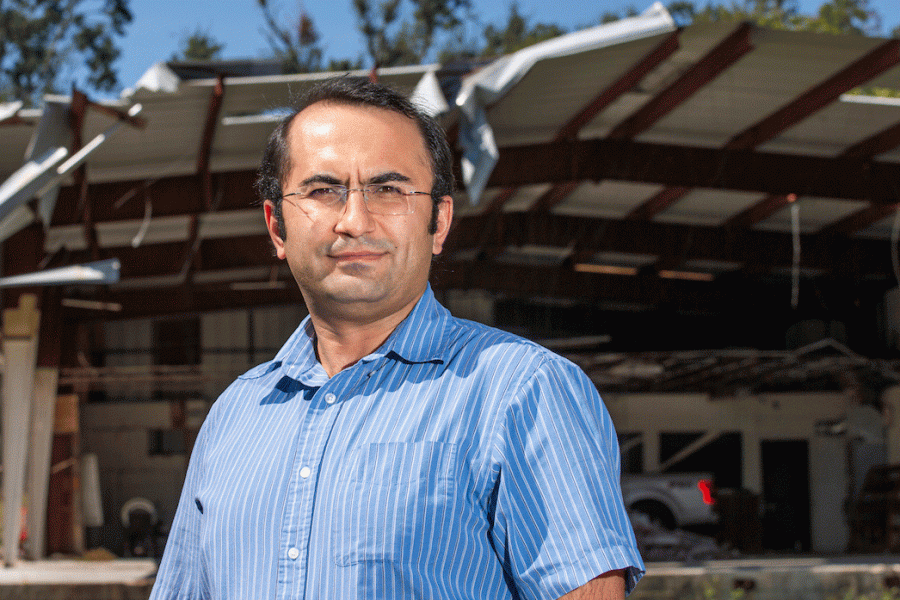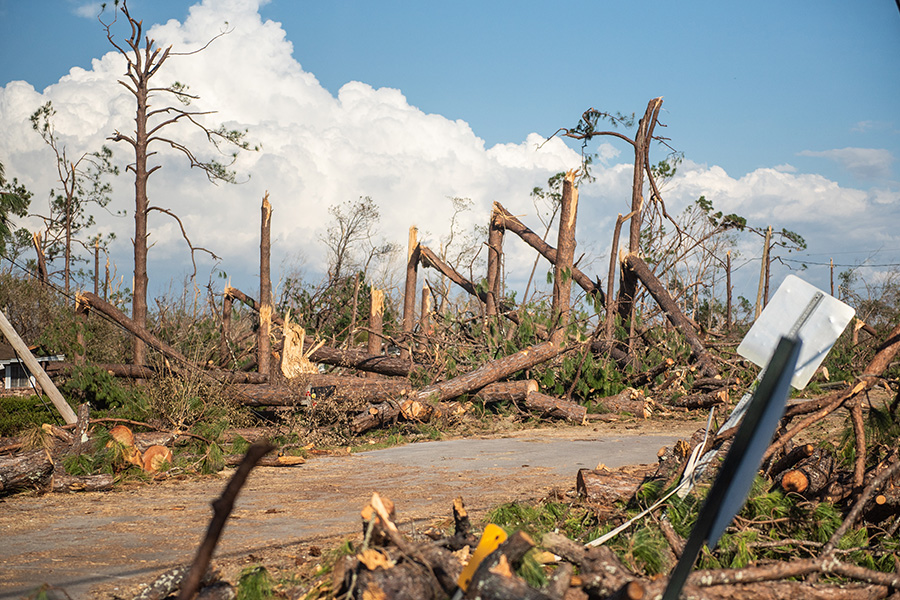
Florida faces hurricanes, tornadoes, tropical storms and flooding almost every year. As the state continues to recover from natural disasters like these, scientists look for ways to reduce damage and improve preparedness.
Eren Erman Ozguven is an associate professor in the Department of Civil and Environmental Engineering at the FAMU-FSU College of Engineering and Director of the Resilient Infrastructure & Disaster Response (RIDER) Center. His research focuses on transportation engineering in crisis situations, especially amongst aging populations.
Ozguven recently discussed how his research helps communities prepare for and recover from disasters.
How does your research serve Floridians?
My research tries to answer the question: “How can we develop new, community-engaged analytical approaches for addressing complex disaster resilience problems that consider population density, environment and infrastructure, as well as compounding disasters such as hurricanes, pandemics and wildfires?”
Florida is uniquely vulnerable to natural disasters. It is an ideal place to study the physical, social and environmental dynamics of resilience. The insight from my research improves our understanding of emergency response operations in both urban and rural areas and helps shape disaster management plans across Florida and beyond.
Involving undergraduate and graduate students in this work has also helped develop a multidisciplinary workforce equipped to face the challenges of a rapidly changing world.
I have built a collaborative research and education program that strives to address growing mobility, safety, accessibility, sustainability and resilience challenges facing communities. Through RIDER, I’ve formed partnerships with researchers in psychology, sociology, public policy, communications, urban and regional planning, geography, computer science, agriculture, medicine, social work, fine arts, history, interior design, oceanography and several engineering fields. Together, we work on projects that strengthen disaster resilience and inform targeted policies and plans.
How can engineers help predict traffic patterns and routes in emergencies?
Engineers develop the technologies to track hurricanes and tornadoes that affect millions of people in the U.S. every year and cause billions of dollars in losses. Florida is especially vulnerable. Hurricanes Michael and Irma, for example, caused major damage to infrastructure.
With support from the National Science Foundation, the Department of Transportation and the Department of Energy, my team uses GIS-based spatial and statistical analysis to study how hurricane-related road closures affect communities. We factor in power outages, downed trees, storm surge and flood zones. By analyzing high-resolution satellite images, we develop models that strengthen transportation network resilience.
These tools help us understand traffic patterns during past evacuations and apply data-driven methods to improve future emergency planning.
How do RIDER Center resources enhance your research?
Our team at RIDER conducts research that has a real-world impact on communities facing challenges in the aftermath of a crisis, from hurricanes to pandemics. We take an interdisciplinary approach that combines technology, data and new methods for infrastructure management, economic efficiency and environmental protection.
At the intersection of engineering, science and people, RIDER connects my research with partners across the public, private, nonprofit and academic sectors. The Center also offers cutting-edge tools such as driving simulations and virtual reality that support research in infrastructure operations, real-time monitoring and experimentation.
How has RIDER partnered with governments and companies to improve disaster responses?
Communities face increasingly complex challenges from co-occurring or back-to-back disasters, and emergency plans must adapt. RIDER helps build multidisciplinary research teams that develop solutions to these problems.
The center coordinates with local governments, state agencies and community partners to remove barriers and improve emergency response. We have 16 affiliated faculty researchers and five established research labs, including the Laboratory of Advanced Operations Research and Resilience Applications, the Methane Emission Reduction Initiative, the Laboratory for Resilient Materials and Structures, the Laboratory for Sustainable Infrastructure Management and the Water Sustainability and Coastal Hazards Laboratory. These partners focus on finding solutions to regional research matters such as designing resilient structures, improving roads, recycling hurricane debris, solving decision-making problems in supply chain management, improving water infrastructure in the face of floods and reducing methane emissions in landfills.
RIDER recently received a grant under NSF’s Fire Science Innovations through Research and Education program. This project brings together FSU’s engineering, computer science, earth science and social work experts with regional planning councils and nonprofits to provide Florida agencies with science-based tools to better respond to wildfires.
How do you bring your experience and research into the classroom?
I believe real-life experience and research enhance learning. While I make sure students understand the theory behind engineering concepts, I also encourage them to think about real-world applications and use technology like geographical information systems and artificial intelligence tools. I often collaborate with local stakeholders and invite them to speak in class. We focus on community problems such as preparation and response and encourage students to think critically and develop creative solutions.





